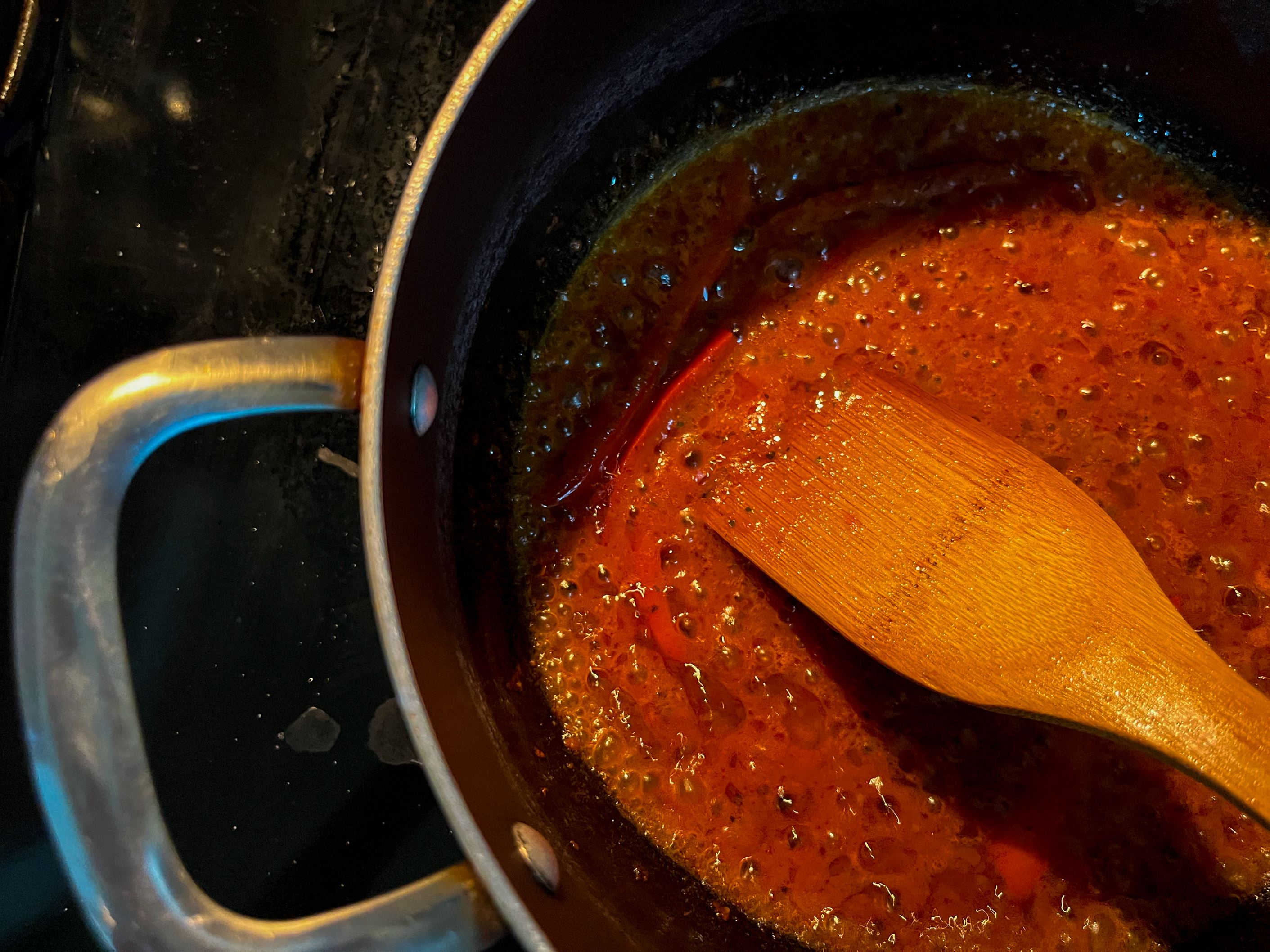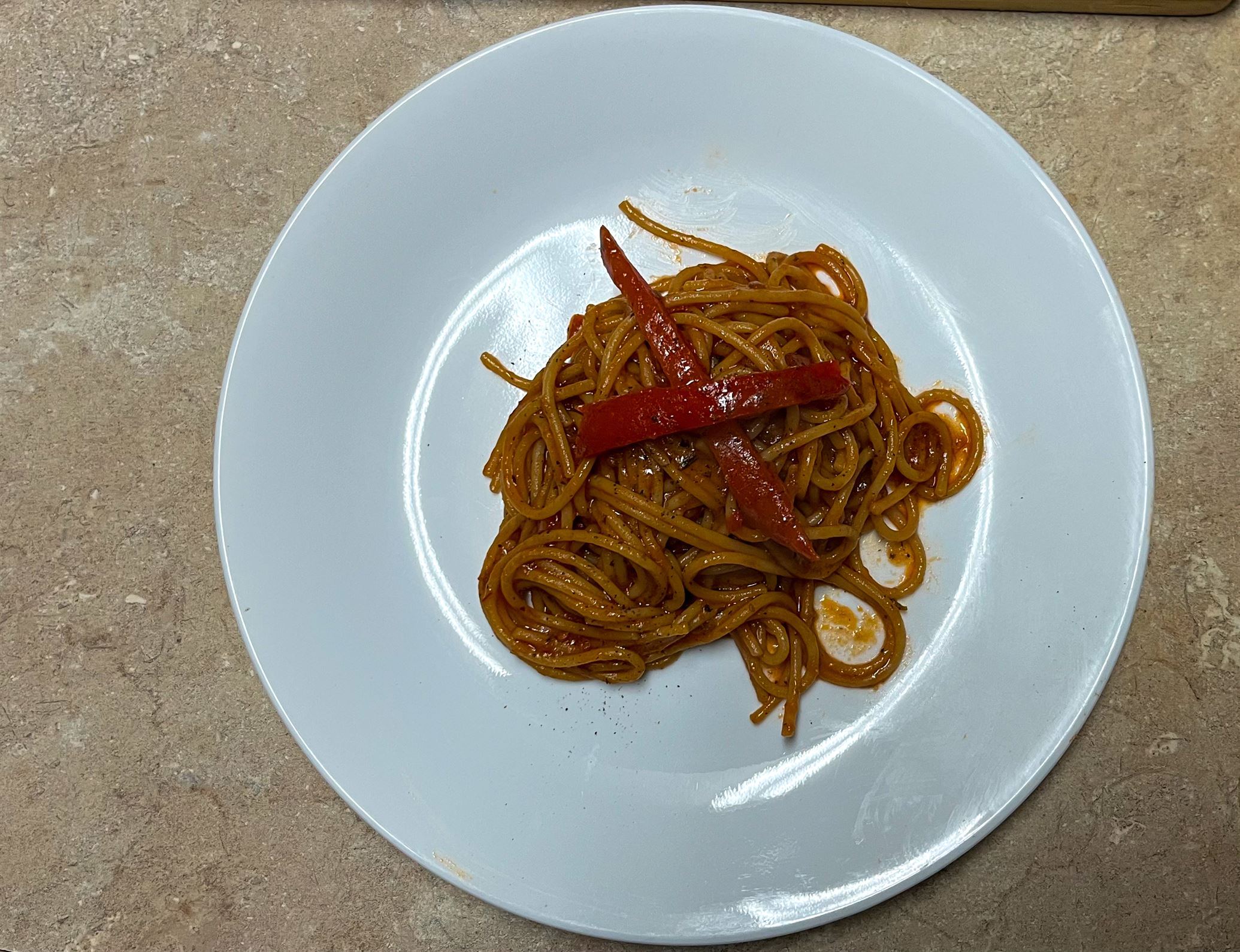There is truly no other spaghetti I would rather have than the one from my culture. No hate to Italy, but Dominican/Caribbean spaghetti is famous all throughout Latin America and its diaspora for its flavor. Needing absolutely no meat for accompaniment, this recipe can be easily made vegan/vegetarian!
“Sofrito” is truly the star of this dish. A blend of peppers, onion, herbs, and spices: this mixture known as “soffritto” in Italy and “epis” in Haiti makes any dish go from a measly 1 to a 10.
Now before I have the Latin American/Caribbean/Italian communities after me, let me preface the recipe by saying this is my family’s recipe. You can add or remove stuff but please do not curse me out. It’s Hispanic Heritage Month, so you can not be rude to me.
Here is what you will need:
Cilantro or culantro, red pepper and oregano are one of the many ingredients in sofrito, the star of this dish! Chelsea Pujols | The Montclarion
- Spaghetti (Duh. Use however much you would like. I never get the amount right anyways.)
- Olive Oil or Canola Oil
- About ½ cup of Tomato Sauce
- 1-2 tablespoons of Sofrito (homemade or you can get this one from Goya.)
- 3-4 Slices of Bell Pepper (any color or all the colors)
- About 1 teaspoon of Dominican or Italian oregano
- 1 cube of chicken bouillon (or the Vegetarian Chicken bouillon from Better than Bouillon.)
- 1 cup of reserved pasta water
- Salt, to taste
Step 1: Cook your spaghetti according to the package directions.
Be sure to add salt to your water to flavor your pasta! Chelsea Pujols | The Montclarion
Do I need to explain more? Fill your pot with water, add salt and turn up your heat to high. If you somehow mess this up, just call it a day and stop here.
Step 2: Drain your spaghetti and start your sauce
Make sure to let your bell peppers soften before moving on to the next step. Chelsea Pujols | The Montclarion
The “I cook you clean” rule does not apply in my Dominican household so let us make our lives a little easier for each other. Once your spaghetti is drained, leave it in the colander and use the same pot. Practice your “cuando yo me muera” speech and add your oil.
Also, do not forget to save your pasta water! It will come in handy soon. It is a magical tool we will use for later, or whatever Mickey Mouse said.
Once the oil is hot, add your sliced bell peppers, your sofrito and your chicken bouillon. Try to break up the cube with your spoon as it heats up, because finding a chunk of “sopita” is bad, but eating one is devastating. Traumatizing, even.
You should have turned down your heat to medium or medium high by now, unless burnt sofrito is your thing.
Step 3: Finish the sauce and add your spaghetti.
Stir every so often to avoid burning. Chelsea Pujols | The Montclarion
Once the chicken bouillon is fully incorporated, add your sauce. If you are not sure what that looks like, everything should have a yellow tint to it. It’s like “La Vie En Rose” but for cooking. And yellow. Actually, it is nothing like “La Vie En Rose.” Forget I said that.
You want to keep your flame on medium heat so that you do not have that sour raw tomato taste. You will know your sauce is cooked when it turns from a bright red to a deep red. Be sure to mix everything every once in a while to avoid burning, and lower your heat after the color change. You can add your oregano here as well. If your family member smuggled a bag of oregano (and I actually mean oregano) in their overfilled suitcase for you, only add a little pinch. Dominican oregano has a stronger flavor than the oregano they sell here.

Adding pasta water and letting your pasta finish cooking in the sauce makes sure everything mixes together perfectly.
Chelsea Pujols | The Montclarion
Now is the time for our pasta water to shine! Add a little bit first and stir. The starches from the pasta water will mix with the oils in your sauce and make it smooth. Then add your spaghetti, add some more pasta water and stir! Tone those arms and make the sauce cling to the pasta at the same time!
Step 4: Thank your lucky stars for the Dominican Republic and enjoy.
After all that stirring, take a break and watch the sauce bubble.
Chelsea Pujols | The Montclarion
You can plate your spaghetti however you would like. You can add some more oregano on top, add cheese, go crazy! If you really want the true Dominican experience though, pack your dish in Tupperware and take it to the beach. Every Dominican knows that spaghetti tastes better on the beach. Do not ask why, it is just a fact of life passed down from generation to generation.
Other traditional sides to this dish are tostones or rice and beans. Yes, rice and beans. It may be a little too much carb-loading, but it is delicious and inexpensive and we are all too broke to judge.
Now, I would like to congratulate you. Out of all the recipes you could have picked, you chose the best one. The spirit of Juan Pablo Duarte smiles upon you. “El Farolito” by Juan Luis Guerra plays as you take a bite. What a blessing it is to be Dominican, no matter if it’s for a lifetime or the ten minutes it takes you to eat.
Que viva la República Dominicana, and Happy Hispanic Heritage Month!



